Talented Tahini
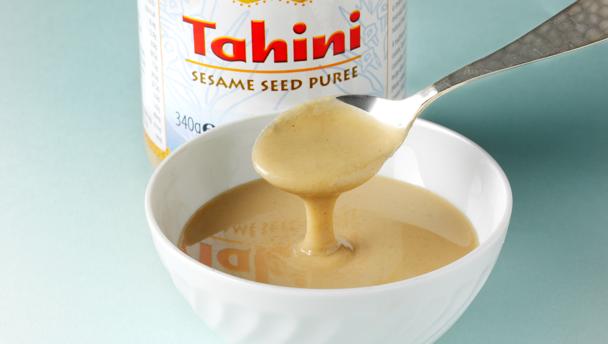
Let’s talk about tahini. In a word, this is a talented food. I had no idea how talented it is until I found this inspiration from food writer and Care2 website contributor, Alisa Rutherford Fortunati.
She says it’s time to pay more attention to tahini—it’s not a seed butter to be ignored. Besides being the backbone to hummus, it makes delicious dressings, creamy soups, scrumptious sweets, and excellent entrées.
And this is where Alisa’s expertise is so helpful. It’s important to know how to choose the right variety, store it properly, and integrate it into right dishes. So here are her keys to discovering the talents of tahini.
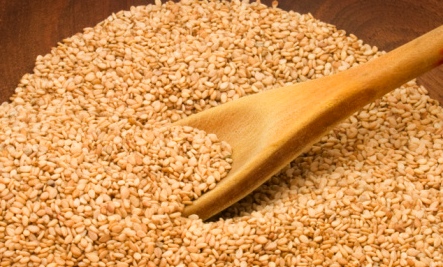
First, how tahini is made: Sesame seeds are soaked overnight, after which they are crushed in order to separate the bran (the hull) from the seed. The crushed seeds are then put into a mix of salt and water, which allows the bran/hulls to sink and the seed kernels to float to the top of the water where they can be skimmed off. After this they are either immediately ground (for a hulled raw tahini) or toasted and then ground into a paste.
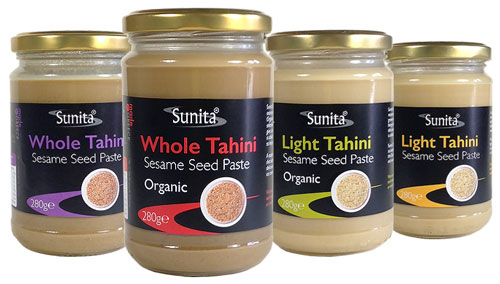
Next, the varieties of tahini: Generally there are 5 different types of tahini—raw, hulled, un-hulled, light-roast, and dark-roast. Usually the level of bitterness and nutritional value go hand in hand, except when it comes to a darker roast. Here is an approximate ranking of nutritional value and flavor from highest nutritional content to lowest:
Raw unhulled (bitter, and much thicker than roasted)
Raw hulled (less bitter, but still thick)
Light roast un-hulled (semi-bitter, but smoother in texture)
Dark roast un-hulled (a bit more bitter, but with a deep flavor and texture somewhere in between that of raw and light roast)
Light-roast hulled (sweet and smooth, good for replacing cream or adding to smoothies)
Dark-roast hulled (deeper flavor, a bit more bitter, but not compared to un-hulled; the texture is usually thicker than that of the hulled light roast)
You’ll usually find these tahini varieties in your local health food store or “natural/ ethnic” section of the supermarket. It’s sold both “fresh” and dehydrated. The dehydrated version is a good choice for traveling. In general though, if you’re not moving around, the fresh variety is the better option.
Finally, why tahini is so talented: Give it more opportunity than hummus. It gives any dish or sauce an excellent creamy, nutty and earthy flavor, making it surprisingly delicious in desserts and scrumptious in sautés. Consider these ideas on how to integrate tahini into a variety of meals — dressings, desserts, entrées and more. It’s such a talented food that you just may want to make tahini a staple in your household.
Use it in dressings and sauces. When a small amount of water is added to tahini, the tahini becomes thicker rather than thinner, until the water to tahini ratio is far exceeded! Because of this helpful characteristic, tahini is a wonderful healthy thickener for any dressing or sauce. if you add too much tahini though, dressings can become bitter, so start with approximately one part tahini to two parts liquid (water, vinegar etc.) and experiment from there.
It’s fantastic in desserts. Like any nut or seed butter, tahini can add a rich body and flavor to any creamy dessert. If you’re making your own fudge or are simply looking for something yummy to drizzle over frozen bananas, tahini is the choice!
Include it in your soups and chowder. When blended with potatoes, squash, carrots or miso, it makes a wonderful base for any soup. Just add approximately ¼ cup light-roast tahini (light- roast gives a subtler flavor and lighter texture) for each six cups of water to begin a creamy broth.
When making this, you need to mix your tahini with a cup or two of soup and give it a whirl in your mixer before adding it back to the pot. Notice how creamy and comforting the soup becomes with this simple addition.
Use it as a binder when making grain burgers (veggie burgers). Tahini can bind dishes together with as little as 2 tablespoons per 5 cups of ingredients, but there is no set rule so just experiment. And besides binding burgers, tahini adds extra oomph to eggless omelets.
So you can find out for yourself, here are 3 of Alisa’s recipes for using tahini in things besides hummus. See if you don’t agree that this is one talented food!
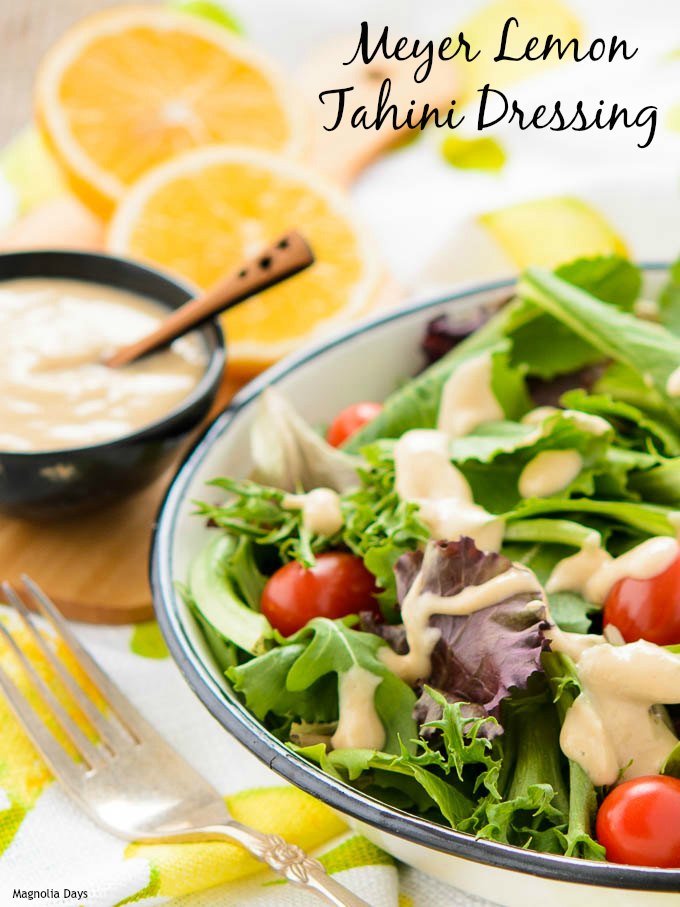
Lemon Tahini Dressing (yields 2 cups)
1 cup water
3/4 cup sesame tahini
4–5 Tbsp. fresh lemon juice
1 1/2 Tbsp. tamari sauce or substitute
1 clove garlic
Cayenne or fresh herbs (all to taste)
In a blender, blend all ingredients until creamy smooth.
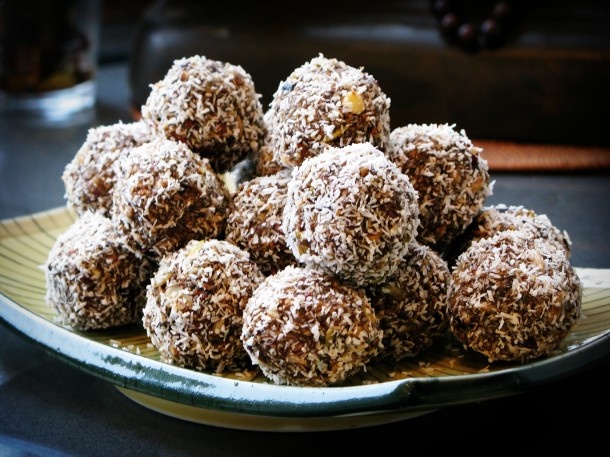
Coconut Cashew Balls (yields 12 balls)
3/4 cup cashew nuts (pieces are fine)
6 dates, pitted (medjool are best)
3 Tbsp. pure maple syrup
3 Tbsp. sesame tahini
6 Tbsp. shredded coconut
Place all the ingredients in a food processor and blend, using the “S” shaped blade. Roll into balls and refrigerate or freeze before serving.
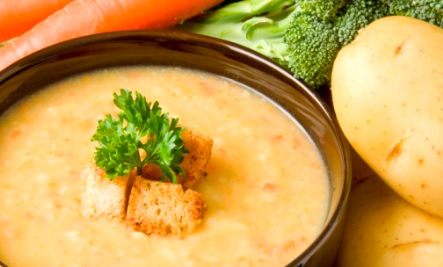
Coconut Curry Soup (serves 5–6 )
5 cloves garlic
2 Tbsp. vegetable oil
2 Tbsp. tamari sauce OR substitute
1–2 large onions, sliced
2 cups sliced carrots
3 cups cubed potatoes
1 (14 oz.) can coconut milk
2 Tbsp. cashew butter*
1 Tbsp. curry powder
1 tsp. onion powder
1 tsp. garlic powder
2 Tbsp. (additional) tamari sauce OR substitute
2 tsp. herb seasoning (such as Herbamare)
1 cup pieces broccoli, cauliflower, etc.
In a blender, blend the garlic with oil and two tablespoons of tamari. Pour into a large soup pot and sauté the onions in this garlic oil. When onions soften, add the carrots and potatoes with half a cup of water. Cover and simmer.
When the vegetables are softened, remove one cup of the vegetables and blend with two cups of water and the coconut milk. Pour this back into the pot.
Remove another cup of cooked veggies and blend with two more cups of water, cashew butter*, curry and remaining seasonings. Pour this blended mixture back into the soup pot.
At this point, add some cauliflower and broccoli or any vegetables in bite-sized pieces. Cook until these vegetables are soft. Do not boil.
*This is where you would substitute the tahini in and blend with the other ingredients as the recipe dictates. For this recipe use a light roast tahini (for a subtler flavor).
- www.bbc.co.uk
- www.care2.com
- www.wholefoods.ie
- www.magnoliadays.com
- www.pinterest.com
 Alice Osborne
Alice Osborne
Weekly Newsletter Contributor since 2006
Email the author! alice@dvo.com
